Is Scratched Enamel cookware safe? Yes. However, it’s best to stay away from using scratched enamel cookware. The metal inside the enamel coating can leach into your food, and bacteria can grow in the cracks and chips. Otherwise, it is still safe to use scratched enamel cookware if the scratch isn’t deep enough.
What is Enamel Coating?
Enamel is a material that is made by fusing powdered glass onto a substrate, usually metal. It is fired with additive pigments. Covering steel elements with enamel protects the base material from rust, gives the ware a pleasing aesthetic, and guarantees health and safety when enamelware is used in the kitchen.
Why Is Scratched Enamel Cookware Safe?
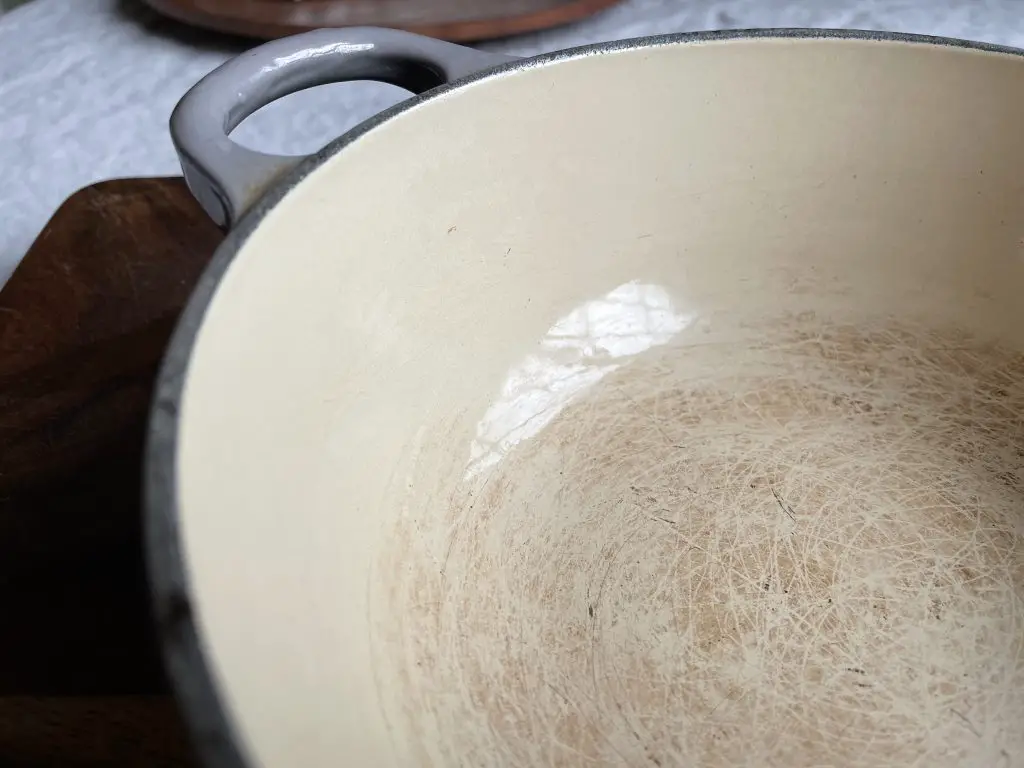
- Scratched enamel cookware is safe to use because the enamel coating is made of non-toxic materials.
- Scratched enamel cookware is safe to use because the enamel is a non-porous material.
- The enamel coating on the cookware helps to protect the food from coming into contact with the metal underneath.
- Scratches in the enamel can allow bacteria to grow, but as long as the cookware is cleaned properly, there is no risk of food poisoning.
What are the benefits of enamel cookware?
Benefits of enamel cookware.
- Enamel cookware is durable and can last for years with proper care.
- Enamel cookware is non-porous, so it doesn’t absorb flavors or odors.
- Enamel cookware is non-reactive, so it’s ideal for cooking acidic foods.
- Enamel cookware is easy to clean and doesn’t require special cleaners or scrubbers.
- It heats evenly, so your food can cook properly.
- It’s attractive and comes in a variety of colors.
- Enamel cookware is very tough and durable.
- It is naturally non-stick.
- Enamel cookware is also beautiful and can add a touch of elegance to your kitchen.
Le Creuset enamel is worn off (What to do now)

If your Le Creuset cookware’s enamel coating is worn off, then you can there are a few things you can do:
If the damage isn’t deep, you can resurface the pan by sanding the affected areas with fine-grit sandpaper, then applying a layer of enamel repair paint.
In some cases, it may be possible to have the enamel repaired by a professional. You can check with Le Creuset to see if they offer this service or if they can recommend a professional who can assist you. Also here you can learn some ways to clean Le Creuset.
If the enamel is worn off significantly, it’s best to stop using the pan as it can be difficult to restore, and the exposed cast iron can rust. Want more information? Then read this.
How do you remove scratches from enamelware?
To remove the scratches from enamelware, follow the simple steps below:
Method 1
- Wipe the enamel surface with a damp cloth to clean the surface
- Mix baking soda with a small amount of water to form a paste.
- Rub the paste gently into the scratches using a soft cloth.
- Rinse the surface with water and dry with a soft cloth.
Method 2
- Mix baking soda with a small amount of lemon juice to paste.
- Rub the paste gently into the scratches using a soft cloth.
- Rinse the surface with water and dry with a soft cloth.
Method 3
Use a specialized enamel repair kit.
Some companies sell enamel repair kits that can be used to touch up scratches on enamelware. These kits usually come with a special putty or paint that can be used to fill in the scratches. Follow the instructions provided with the kit to repair the scratches.
What are the signs of damaged enamel?
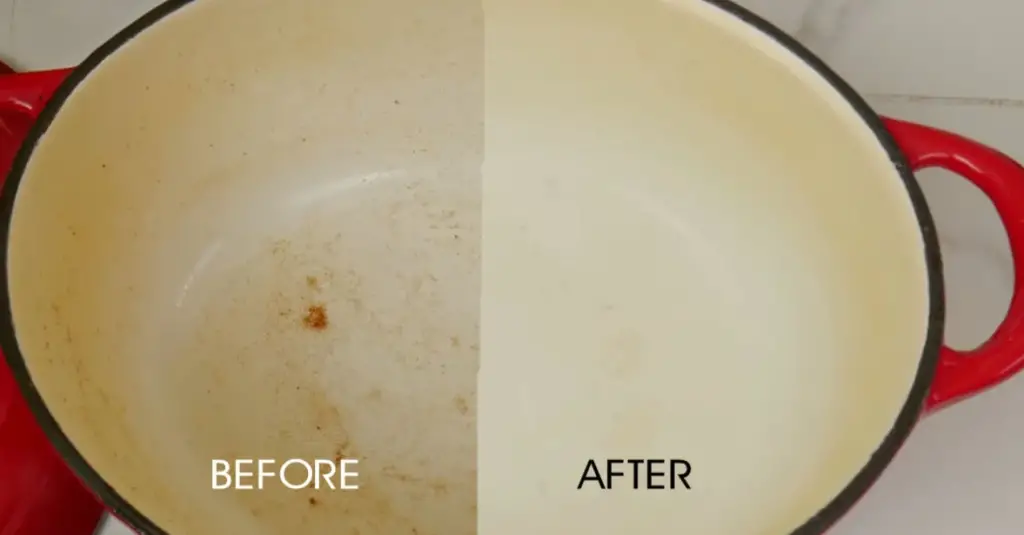
If your cookware is dull, scratched, or starts to chip off in some places, you determine that your enamel coating is damaged. If you see any of these signs, it’s best to replace your cookware so that food doesn’t come into contact with the damaged surfaces.
Does enamel scratch easily?
No, the enamel coating is tough enough and resistant to scratches. But if you use hard or sharp objects on it, it can get scratched on the surface.
So, It’s important to handle enamelware with care, as even small scratches can accumulate over time and cause the surface to become rough and dull.
Additionally, scratches can provide a place for bacteria and other harmful substances to collect, which can impact the safety and performance of the cookware.
To avoid scratches, it’s best to use wooden, silicone, or nylon utensils when cooking with enamelware and to avoid stacking enamelware on top of each other, as this can cause scratches or chips.
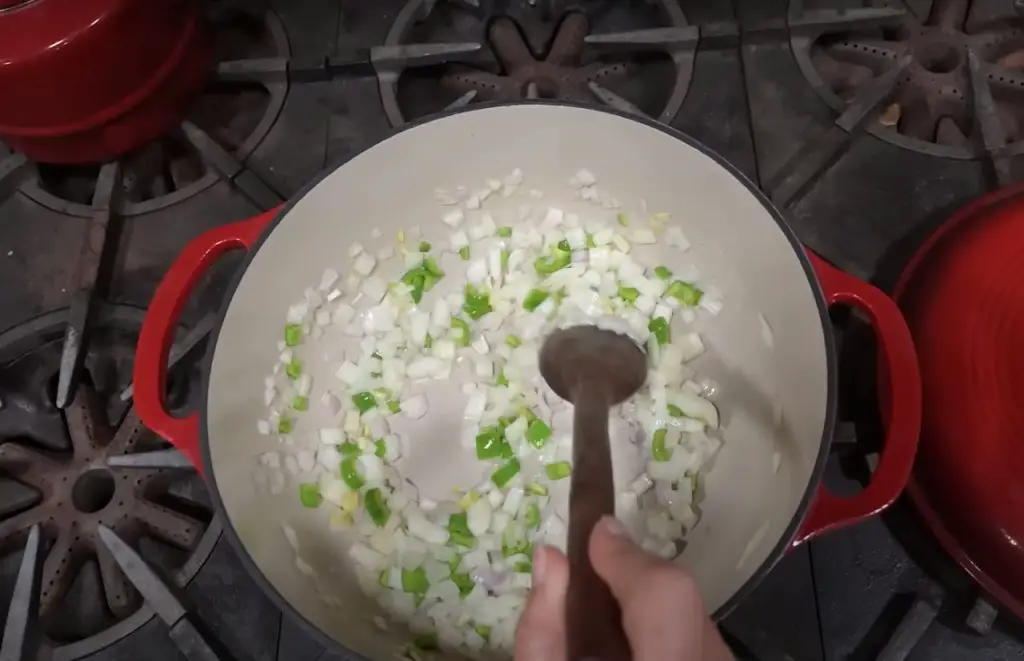
Is enamel better than non-stick?
Yes, enamel-coated cookware is slightly better than traditional nonstick. Why I’m saying this? Because, Enamel is more durable and doesn’t require as much care as non-stick, but it can be more expensive. Non-stick cookware is comparatively cheaper, but it doesn’t last as long as enamel. That’s why Enamel is better than non-stick for me.
Can you drink from chipped enamel cups?
Yes, you can drink from chipped enamel cups. But before drinking, you need to wash it thoroughly. When the enamel is damaged, it can create microscopic cracks that bacteria can enter. However, you should be fine if you clean the cup thoroughly and don’t let the liquid sit in the cup for too long.
When should you throw out enameled cast iron?
The enamel on your cookware is important because it protects the metal underneath and prevents food from sticking. If you notice any chips or cracks in the enamel, it is time to replace or throw out your cookware. Because when the enamel is damaged, it can no longer protect the cookware from corrosion.
Does metal scratch enamel cookware?
No, metal utensils didn’t scratch enamel cookware. But harder metals can scratch enamel if they’re sharp or rough.
Knowing how to use this cookware properly is important to avoid any damage.
If you’re worried about scratching your enamel cookware, it’s best to avoid using sharp or rough metal utensils altogether. Instead, opt for wooden or silicone utensils that won’t damage the finish.
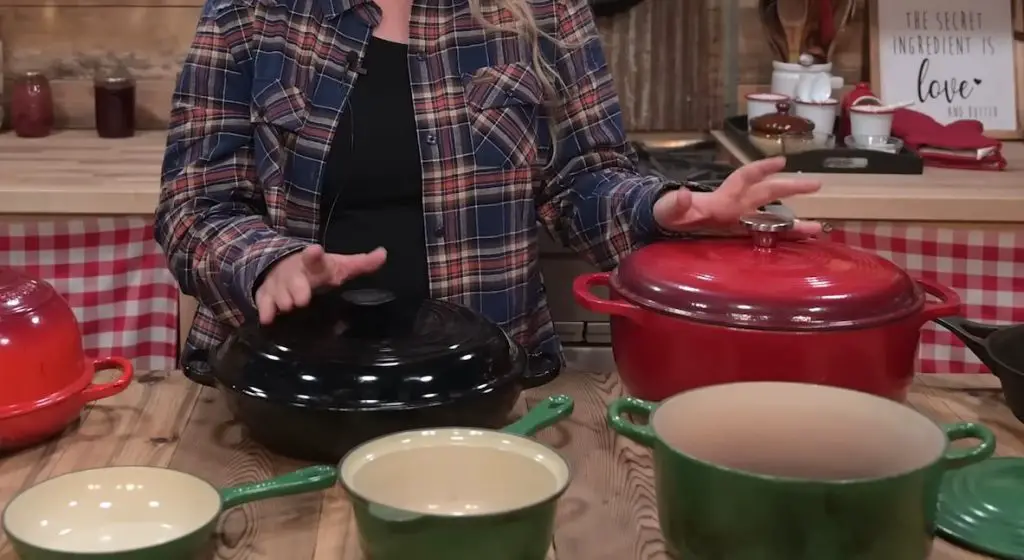
What is the difference between enamel and ceramic cookware?
Enamel cookware is made from metal, usually cast iron or steel, with a glass-like coating.
This coating gives enamelware its nonstick properties and makes it resistant to scratches and chipping.
On the other hand, Ceramic cookware is made entirely of clay that has been hardened by heat.
It is also nonstick and resistant to scratches and chips, but because it’s more fragile, it’s more likely to break if dropped.
Is it Bad if My Enamel Dutch Oven, Skillet, or Pot is Chipped?
Conclusion
So, we hope our article was useful for you. Use your cookware safely, and take care about your health. If you have any questions, you can leave a comment below
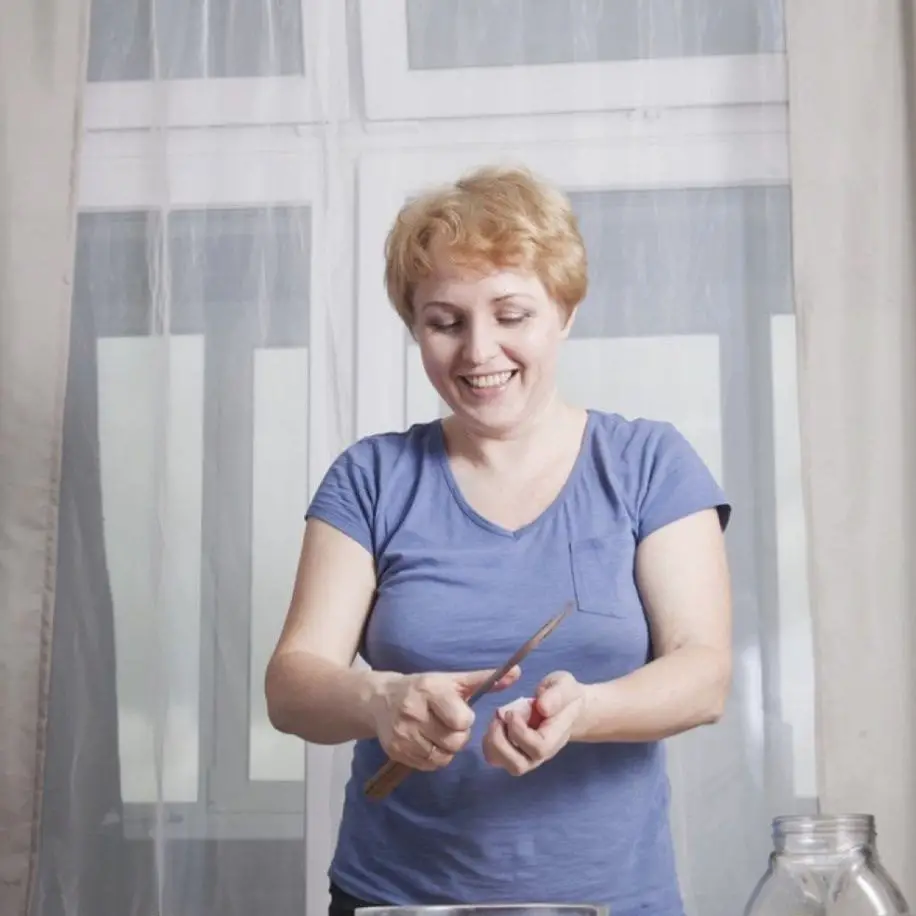
I am Linda. A housewife and a writer, and also the founder of this site. I love cooking and collecting cookware sets. I’ve been blogging since 2020, and in this blog, you can find cookware-related problems and solutions, cookware reviews, safe cookware sets, and more.
I have put a lot of effort into gathering here the experience and knowledge that I have, and I want to help every reader.

